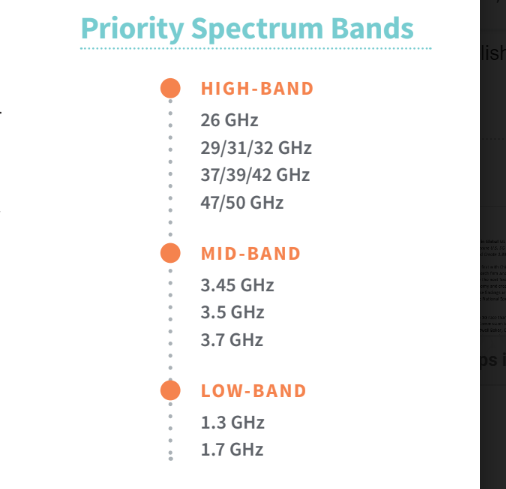CTIA Unveils National Spectrum Plan

CTIA, the wireless association, has taken the wraps off its version of a national spectrum strategy.
In October 2018, the Trump Administration called for such a strategy, a presidential memorandum to the heads of executive departments and agencies, and sought input from stakeholders as well.
The National Telecommunications & Information Administration, in a request for comment Dec. 20, sought public input on that comprehensive plan, which NTIA said needs to include increasing access to spectrum, improving sharing, enhancing spectrum management and "leveraging" ongoing R&D.
The President made clear that with the burgeoning need for spectrum for the industry, the government has to make a concerted effort to free up more of its spectrum, including to make sure America wins in 5G. "Federal agencies must thoughtfully consider whether and how their spectrum-dependent mission needs might be met more efficiently and effectively, including through new technology and ingenuity," he wrote.

Wireless companies have a big stake in the rollout of 5G, and had a lot to say about what the Administration's "bold vision" for spectrum should look like.
CTIA said that the U.S. has pulled ahead of South Korea in "5G Readiness," and is now tied with China, its chief competitor in the race to 5G.
"But while America ranks strongly in the majority of 5G-readiness metrics, including leading the world in high-band spectrum availability," it said, "China and many other countries are ahead in making critical mid-spectrum available for 5G and Chinese wireless operators are conducting hundreds of large-scale 5G trials across the country, thanks to a significant wireless infrastructure advantage."
Broadcasting & Cable Newsletter
The smarter way to stay on top of broadcasting and cable industry. Sign up below
Related: NCTA Says Government Spectrum Plan Should Be Balanced
CTIA has a three-pronged angle of attack:
1. "Create a five-year schedule of auctions that puts more high-, mid- and low-band spectrum in the hands of America’s wireless industry.
2. "Recommit federal spectrum policy to proven free market approaches that harness the power of competition to enhance our nation’s economic and national security.
3. "Modernize government policies and procedures to ensure optimal use of spectrum."
The FCC has already been busy on the auction front, a point CTIA makes, pointing to the fact it has already auctioned 28 GHz spectrum, is in the midst of a 24 GHz spectrum auction, and has more auctions in the pipeline for later this year.
But there is still more to do, it said.
CTIA wants the FCC to free up as much C-Band (3.7 GHz mid-band) spectrum as possible for 5G, which puts it somewhat at odds with cable operators and broadcasters who use the band for network distribution.
They said the FCC should not move until it can be sure incumbent users are protected from interference. CTIA argues the FCC can both free up spectrum expeditiously using market mechanisms and still protect those incumbents.
Contributing editor John Eggerton has been an editor and/or writer on media regulation, legislation and policy for over four decades, including covering the FCC, FTC, Congress, the major media trade associations, and the federal courts. In addition to Multichannel News and Broadcasting + Cable, his work has appeared in Radio World, TV Technology, TV Fax, This Week in Consumer Electronics, Variety and the Encyclopedia Britannica.
